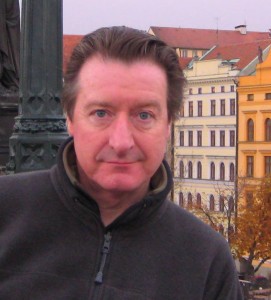
the precious gem: an old story
We all recognise that as human beings we become attached-often identified-to our stories, the content and imaginative narrative of our lives. The Buddhist scholar Rob Nairn suggests that we can become “content obsessed”, fixated on the often motivating, competing and conditional stories in our lives; yet inquiry into this also suggests that large parts of our overall stories when too challenging are disowned, stored in the shadow of our “inner bag” or unconscious.
Looking into this shadow, we discover all over again this content, like a heavy bag of coal we carry; inside this blackness, though, there may be diamonds. It therefore behoves us to explore this with some tenacity and skill, to effectively meet our inner content with a beginner’s mind, sifting and “restorying” the often-disabling narratives that run through here, like dark seams fueling our lives.
We’re not stuck here, though; we can carry and inhabit other stories that are enabling, insightful, unconditioned by past or current influences. But we must be willing to meet and encounter our earlier stories of darkness and despair, our failings, shame and vulnerabilities; we must skilfully sift through this. Perhaps this is the carbon, that once burnt, transforms into diamond and glitters with wisdom?
An old story. A man is seen lying in the gutter by a rich gem salesman who takes pity on his sleeping form. He slips a gemstone into his inner jacket pocket; this will have the power to lift the man out of poverty and relieve his suffering. Then the gem salesmen walks away.
A year later they meet again. The man is still poverty stricken and broken by his suffering. The gem salesman asks him why he did not use the gemstone and the man is astonished-he could have found his liberation if only he had looked in the right place, his own pocket.
If we want to find what’s really precious in our lives where do we go looking?
Perhaps we will never find what is truly precious by looking outside; the path is facilitated by looking within. The Buddha knew this, he said “be a lamp unto yourself” and perhaps we all have to learn to do this by doing this for ourselves, but whereas the territory is our own we do have some maps-stories-laid down by others.
To start with, it might be helpful to understand that for most of the time our minds are unsettled and relatively agitated, “monkey mind” is the term we use to describe the way our minds jump from thought to thought, from past to future or into our imagination.
So, in order to get onto the path in any real way we need to work to settle the mind’s habit of distraction. We can do this via a mindfulness of breathing, contacting the soothing rhythm of our breathing in the here and now, then grounding our experience not in our minds but in our body or the physicality of senses. Our breath and body-our soma-is here and now and graced by presence, by being.
As the mind stills we are preparing to look deeply within, but often when we do we discover-to our horror-such a mess of mixed up entangled thoughts and feelings of pride, shame, self-critical thinking and profound doubts and judgments: who is this person, we might ask, and begin to suppress or attack ourselves.
To look deeply into our minds without a strong reaction into retreat we are required to make friends with ourselves, and we do this by accepting the voices within in an attitude of self-compassion, for these were and are us, the very parts of us that we cast out many years ago, yet still live in our shadows.
When we have developed a more compassionate relationship with ourselves (and this might take time) we can begin to truly look inside, into the murk and mess and entanglements inside and start to reach the gemstone within that was always there and, indeed, nurtured in the mess.
Sometimes this is called the Hero’s or Knight’s Journey and is reflected in ancient stories told of knights who searched for the sangréal, our own royal bloodline. Often The Knight is unknowing that the real job is the inside job of “wholing” and finding the inner cup, the anima that completes, wholing into the Holy. We forgo myths as having no factual truth, forgetting that the Knight who searches for Sophia is a transcendent metaphor for the innate truth of our own journey to insight and wisdom (“Sophia” meaning wisdom).
As with the travails of the Knight, this path brings us into a more intimate relationship with not only our liberation, but also our suffering; there may be no freedom without engaging with the one who is suffering, the one born then reborn from pain and dissatisfaction. Our suffering, too, is the path of the human being and is to be honoured as such when we let ourselves relax in to the very part of us we have defended against, and fought against, for so long.
This is akin to opening up to what we already have and are, a precious gemstone: when we do so the authentic self yawns, stretches and gradually wakes.
We can’t really work effectively with the suffering of others until we begin to work with our own range of elaborate and archaic stories and defences that have cast away our pain; we have come to believe that we should not experience the very thing that makes us most human, our suffering.
But if we do, if we “restory” we could find our place in the human family as authentic, vulnerable, radiant and clear.





Write a Comment